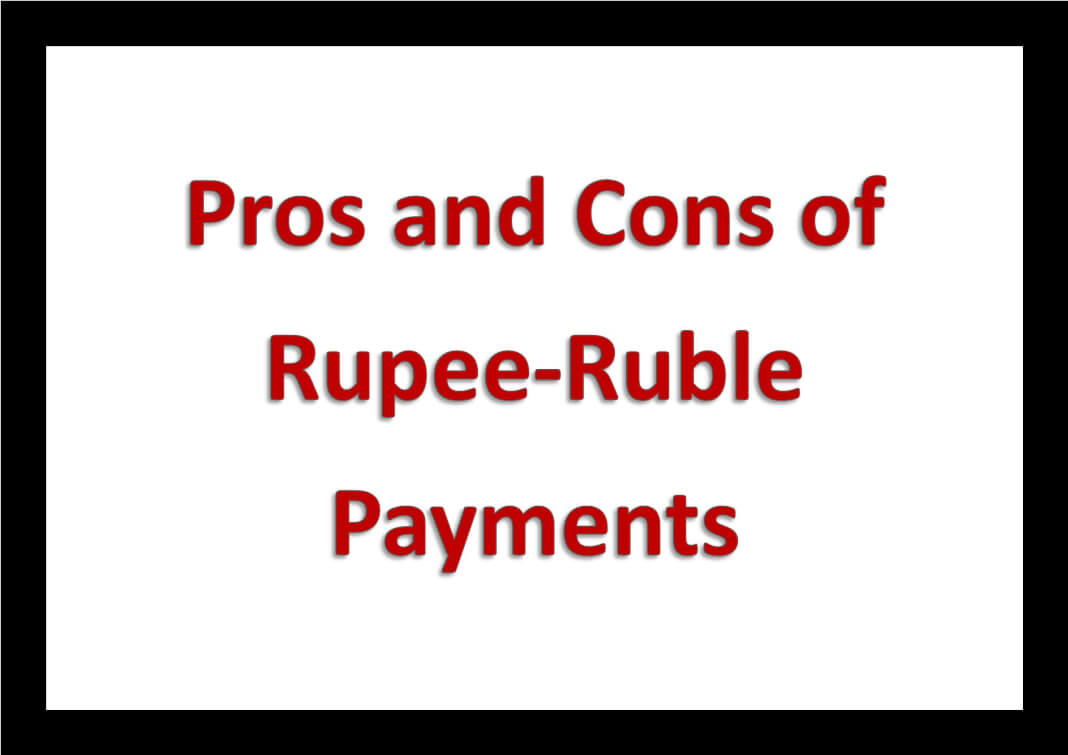The Russian invasion of Ukraine has caused tremendous economic hardship to India. Higher crude price, sanctions against Russia etc. are some of the costs that India has to bear. Still, for managing these difficulties, India is thinking on restarting the Rupee-ruble payment mechanism for settling bilateral trade.
What is Rupee-Ruble payment arrangement?
The Rupee-Ruble payment mechanism is a local currency trade payment arrangement under which the currencies of the two countries are used to settle payments for trade settlement between the two countries. Instead of using the international hard currencies like the US Dollar, Euro etc, both countries will be using their own currencies to settle trade. It is some sort of a local currency payment system.
Under this payment arrangement, Indian exporters can get their payments in Ruble whereas Russian experts to India will be paid in Rupee.
Why was this set up?
Though the Rupee-Ruble trade arrangement came into the limelight in the context of the Ukraine invasion, it was created in 1953 under the Indo-Soviet Trade Agreement was signed. But during that time, Russia enjoyed sizable trade surplus and as a result their rupee holdings went high. This has created rupee investment problem for Moscow and consequently the arrangement became redundant during the 1980s. later in 2014, both countries brought back the arrangement to bypass US sanctions on India-Russia defence deal.
The pros and cons of Rupee-Ruble payment mechanism
Now, in the context of the Ukraine invasion, Russia is going to face severe trade and economic sanctions. There will be only few countries on which Russia can engaged in trade.
On the other side, India will be suffering from higher crude prices. In this context, the reinstatement of the Rupee-Ruble payment arrangement will benefit both sides.
Advantages of the arrangement
Following are the advantages of the payment arrangement in the current context.
- India can overcome some of the disadvantage of the higher crude price through the Rupee-Ruble trade arrangement.
- Russian crude will be provided at a concessional price vis a vis other sources.
- The arrangement will help to bypass the sanctions as the involved item is crude. Europe is also continuing oil trade with Russia.
- The US Dollar requirements for payments can be reduced for crude purchase.
- Russia can overcome the difficulty of not accessing the SWIFT mechanism through Rupee-Ruble payments.
At the same time, the arrangement may create some disadvantages for India.
Risks of the arrangement
- Determining the exchange rate between the two currencies will be problematic since the Ruble has lost considerable values against the Rupee. Besides, any future slide in the value of the Ruble may create further problems of settling trade.
- The Indian bank who is providing Ruble account to Indian merchants may face the risk of getting some negative image in the West.
- Probability for steep depreciation of the Russian Ruble in the coming months.
- There can have foreign exchange risks since the Ruble is not significantly tradeable in the international currency markets. Facilities like hedging are not available for Ruble trade.
Hence, the Rupee-Ruble payment arrangement can overcome several problems, it will create fresh ones. Detailed agreements between the two sides is necessary for the success of the arrangement.
*********










